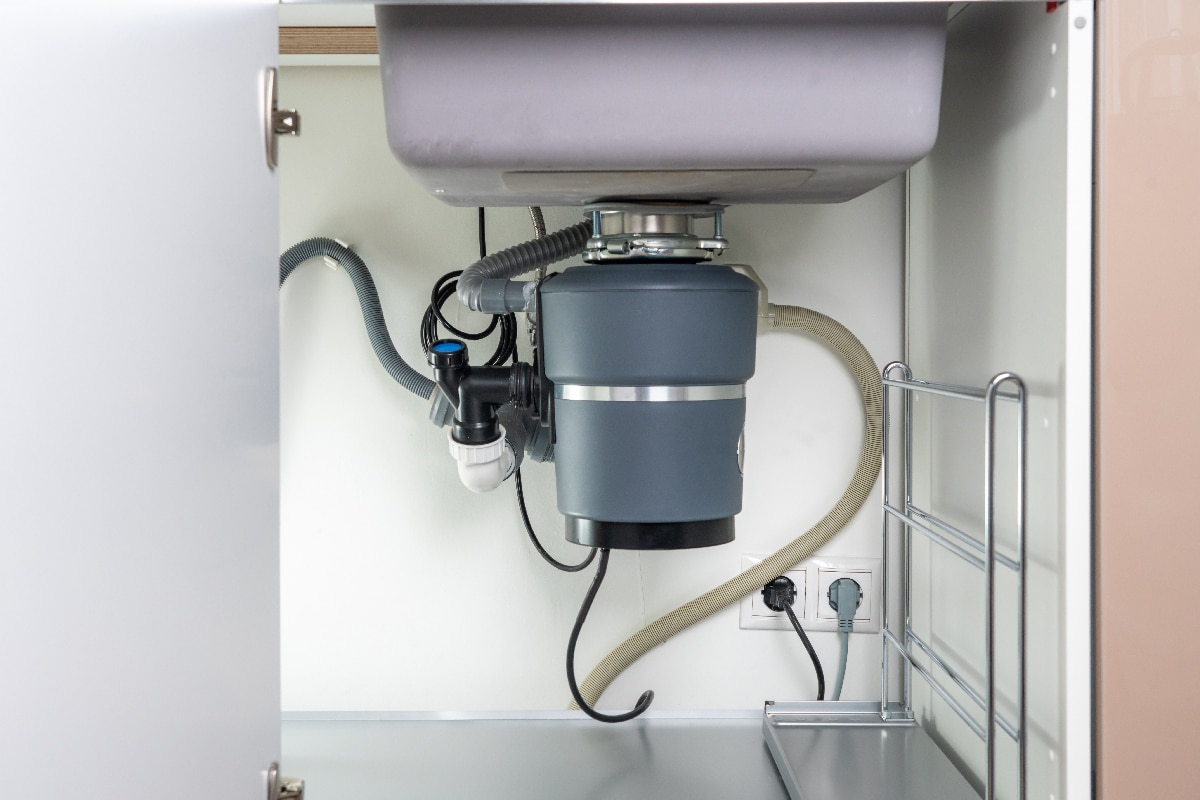How to Hook Up a Single Drain Kitchen Sink
Are you looking to upgrade your kitchen sink to a single drain model? Hooking up a single drain kitchen sink may seem like a daunting task, but with the right tools and knowledge, it can be a simple and rewarding DIY project. In this guide, we will walk you through the steps of installing a single drain kitchen sink and provide helpful tips and troubleshooting advice along the way.
How to Install a Single Drain Kitchen Sink
Before you begin, make sure you have all the necessary tools and materials. You will need a wrench, pliers, screwdriver, plumber's putty, silicone sealant, and a new single drain kitchen sink. It's important to choose a high-quality sink to ensure durability and functionality.
Start by turning off the water supply and disconnecting the old sink. Remove any old putty or caulk from the previous sink installation. If you are replacing an old sink, you may need to adjust the size of the opening in the countertop to fit the new sink.
Single Drain Kitchen Sink Installation Guide
Place the new sink into the opening and secure it with clips or brackets. Apply a thin layer of plumber's putty around the edge of the sink to create a watertight seal. Carefully lower the sink back into the opening, pressing down to ensure a tight seal. Wipe away any excess putty.
Next, attach the drain assembly to the sink. This typically involves attaching the rubber gasket and mounting ring to the bottom of the sink, followed by the drain and tailpiece. Tighten the connections with a wrench or pliers, making sure they are secure.
Connect the water supply lines to the new sink, making sure to follow the hot and cold markings. Use Teflon tape on the threads to ensure a tight seal. Turn the water supply back on and check for any leaks.
Step-by-Step Guide for Hooking Up a Single Drain Kitchen Sink
If you are hooking up a garbage disposal, now is the time to do so. Follow the manufacturer's instructions for installation and make sure to connect the disposal to the drain assembly. Once everything is connected, run water through the sink and disposal to check for any leaks.
Finally, use silicone sealant to seal the edges of the sink where it meets the countertop. This will prevent any water from seeping underneath the sink and causing damage. Wipe away any excess sealant and allow it to dry completely before using the sink.
Single Drain Kitchen Sink Plumbing Tips
When installing a single drain kitchen sink, it's important to pay attention to the slope of the drain. The drain should slope downward at a gradual angle to allow water to flow freely. If the slope is too steep, it can cause clogs and backups.
Another important tip is to make sure all connections are properly tightened to prevent leaks. It's also a good idea to run water through the sink and check for leaks before installing the garbage disposal, as it can be more difficult to access and fix any issues once the disposal is in place.
DIY Single Drain Kitchen Sink Hookup
While hiring a professional plumber is always an option, hooking up a single drain kitchen sink is a task that can easily be tackled by a confident DIYer. Not only will it save you money, but it can also be a rewarding experience to complete a home improvement project on your own.
Make sure to follow all safety precautions and carefully read through the manufacturer's instructions for your specific sink and disposal. If you run into any issues, don't hesitate to seek advice from a professional or a knowledgeable employee at your local hardware store.
Single Drain Kitchen Sink Hookup Troubleshooting
If you encounter any issues while hooking up your single drain kitchen sink, don't panic. Most issues can be easily resolved with the right tools and knowledge. Common problems include leaks, clogs, and improper installation. Refer to the manufacturer's instructions or seek advice from a professional if needed.
Tools and Materials Needed for Hooking Up a Single Drain Kitchen Sink
To recap, here are the tools and materials you will need for hooking up a single drain kitchen sink:
Single Drain Kitchen Sink Hookup: Common Mistakes to Avoid
One common mistake when hooking up a single drain kitchen sink is forgetting to properly tighten all connections. This can lead to leaks and potentially costly damage. Make sure to double check all connections before using the sink.
Another mistake is not following the manufacturer's instructions. It's important to carefully read and follow the instructions to ensure proper installation and avoid any potential issues down the line.
Professional vs. DIY: Hooking Up a Single Drain Kitchen Sink
While hiring a professional plumber may seem like the easier option, it can also be costly. DIY installation of a single drain kitchen sink is a feasible option for those with some basic plumbing knowledge and the right tools. If you are confident in your abilities, go ahead and tackle the installation yourself to save time and money.
Now that you know how to hook up a single drain kitchen sink, you can confidently take on this DIY project. With the right tools, materials, and knowledge, you can upgrade your kitchen with a sleek and functional single drain sink. Remember to follow all safety precautions and consult a professional if needed. Happy plumbing!
Why Single Drain Kitchen Sinks are the Way to Go

Efficiency and Space-Saving Design
 When it comes to designing a functional and efficient kitchen, every little detail matters. This includes choosing the right type of sink for your kitchen. In recent years,
single drain kitchen sinks
have become increasingly popular among homeowners and designers alike. And for good reason. These sinks are not only aesthetically pleasing, but they also offer a number of practical benefits that make them the perfect choice for any kitchen.
One of the main advantages of a
single drain kitchen sink
is its
efficiency
. Unlike traditional double basin sinks, which have two separate drains, a single drain sink has just one. This means you can easily wash, rinse and dry dishes without having to constantly switch between basins. This not only saves you time and effort, but it also makes for a more streamlined and organized kitchen space.
Moreover, single drain sinks are ideal for smaller kitchens where space is limited. By eliminating the need for a second drain, they free up valuable counter space, making your kitchen feel more spacious and less cluttered. This is especially beneficial for those who have smaller kitchens or are looking to maximize space in their kitchen design.
When it comes to designing a functional and efficient kitchen, every little detail matters. This includes choosing the right type of sink for your kitchen. In recent years,
single drain kitchen sinks
have become increasingly popular among homeowners and designers alike. And for good reason. These sinks are not only aesthetically pleasing, but they also offer a number of practical benefits that make them the perfect choice for any kitchen.
One of the main advantages of a
single drain kitchen sink
is its
efficiency
. Unlike traditional double basin sinks, which have two separate drains, a single drain sink has just one. This means you can easily wash, rinse and dry dishes without having to constantly switch between basins. This not only saves you time and effort, but it also makes for a more streamlined and organized kitchen space.
Moreover, single drain sinks are ideal for smaller kitchens where space is limited. By eliminating the need for a second drain, they free up valuable counter space, making your kitchen feel more spacious and less cluttered. This is especially beneficial for those who have smaller kitchens or are looking to maximize space in their kitchen design.
Easy Installation and Maintenance
 Another advantage of single drain sinks is their
easy installation and maintenance
. With just one drain, these sinks are much simpler to install compared to double basin sinks. This means you can have your new kitchen sink up and running in no time, without any additional hassle or costs.
Maintenance is also a breeze with a single drain sink. With just one drain to clean, it takes less time and effort to keep it clean and free of any clogs or blockages. This is especially beneficial for busy homeowners who don't have the time or energy to constantly maintain a double basin sink.
Another advantage of single drain sinks is their
easy installation and maintenance
. With just one drain, these sinks are much simpler to install compared to double basin sinks. This means you can have your new kitchen sink up and running in no time, without any additional hassle or costs.
Maintenance is also a breeze with a single drain sink. With just one drain to clean, it takes less time and effort to keep it clean and free of any clogs or blockages. This is especially beneficial for busy homeowners who don't have the time or energy to constantly maintain a double basin sink.
Aesthetic Appeal
 Last but not least, single drain sinks offer a
sleek and modern aesthetic
that can elevate the overall look of your kitchen. Available in a variety of styles, materials, and finishes, these sinks can complement any kitchen design and add a touch of sophistication to your space.
In conclusion, when it comes to choosing the right kitchen sink, single drain sinks are the way to go for their efficiency, space-saving design, easy installation and maintenance, and aesthetic appeal. So if you're looking to upgrade your kitchen, consider opting for a single drain sink to add both functionality and style to your space.
Last but not least, single drain sinks offer a
sleek and modern aesthetic
that can elevate the overall look of your kitchen. Available in a variety of styles, materials, and finishes, these sinks can complement any kitchen design and add a touch of sophistication to your space.
In conclusion, when it comes to choosing the right kitchen sink, single drain sinks are the way to go for their efficiency, space-saving design, easy installation and maintenance, and aesthetic appeal. So if you're looking to upgrade your kitchen, consider opting for a single drain sink to add both functionality and style to your space.




/how-to-install-a-sink-drain-2718789-hero-24e898006ed94c9593a2a268b57989a3.jpg)










:max_bytes(150000):strip_icc()/how-to-install-a-sink-drain-2718789-hero-24e898006ed94c9593a2a268b57989a3.jpg)
/how-to-install-a-sink-drain-2718789-hero-b5b99f72b5a24bb2ae8364e60539cece.jpg)








































